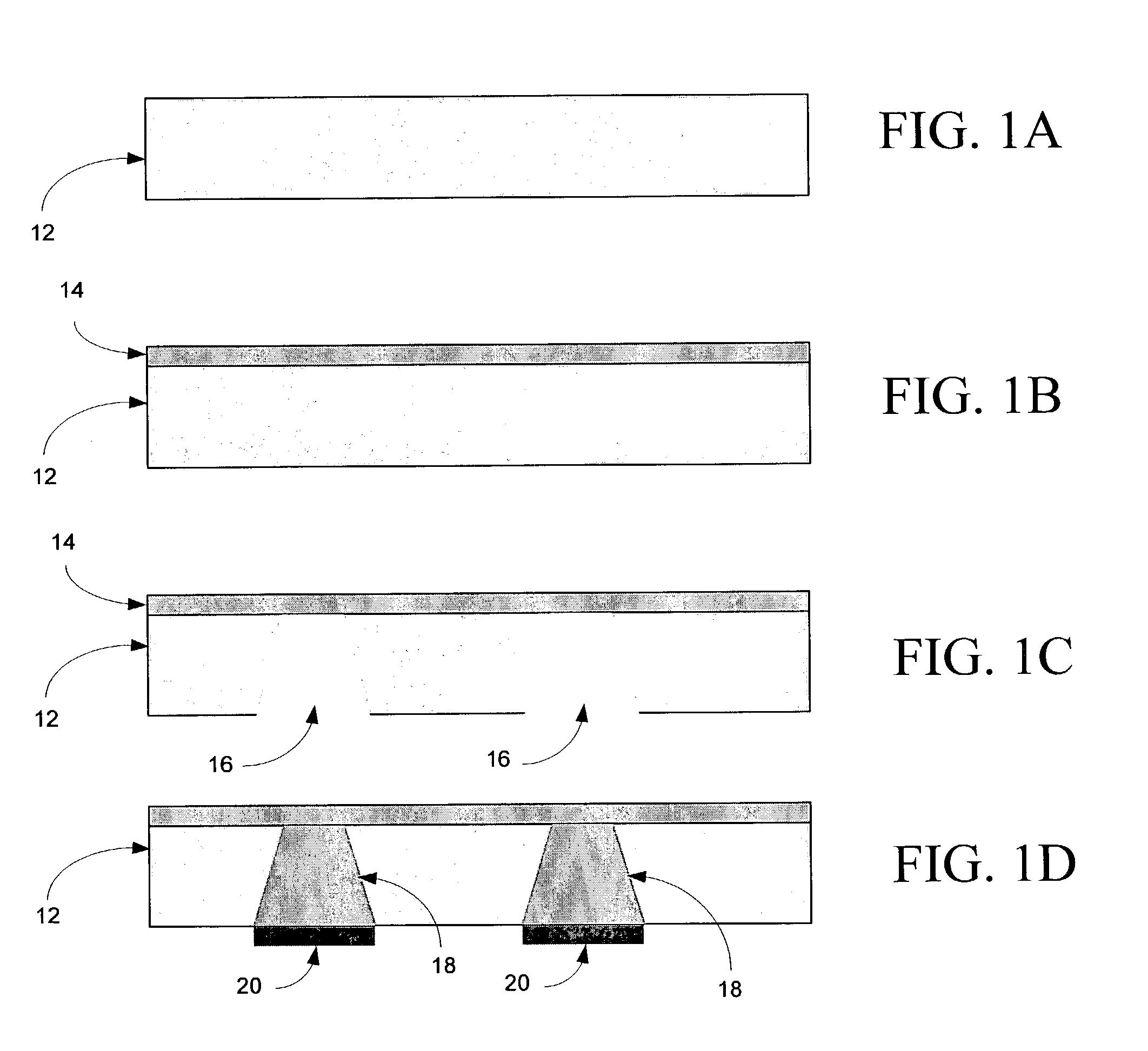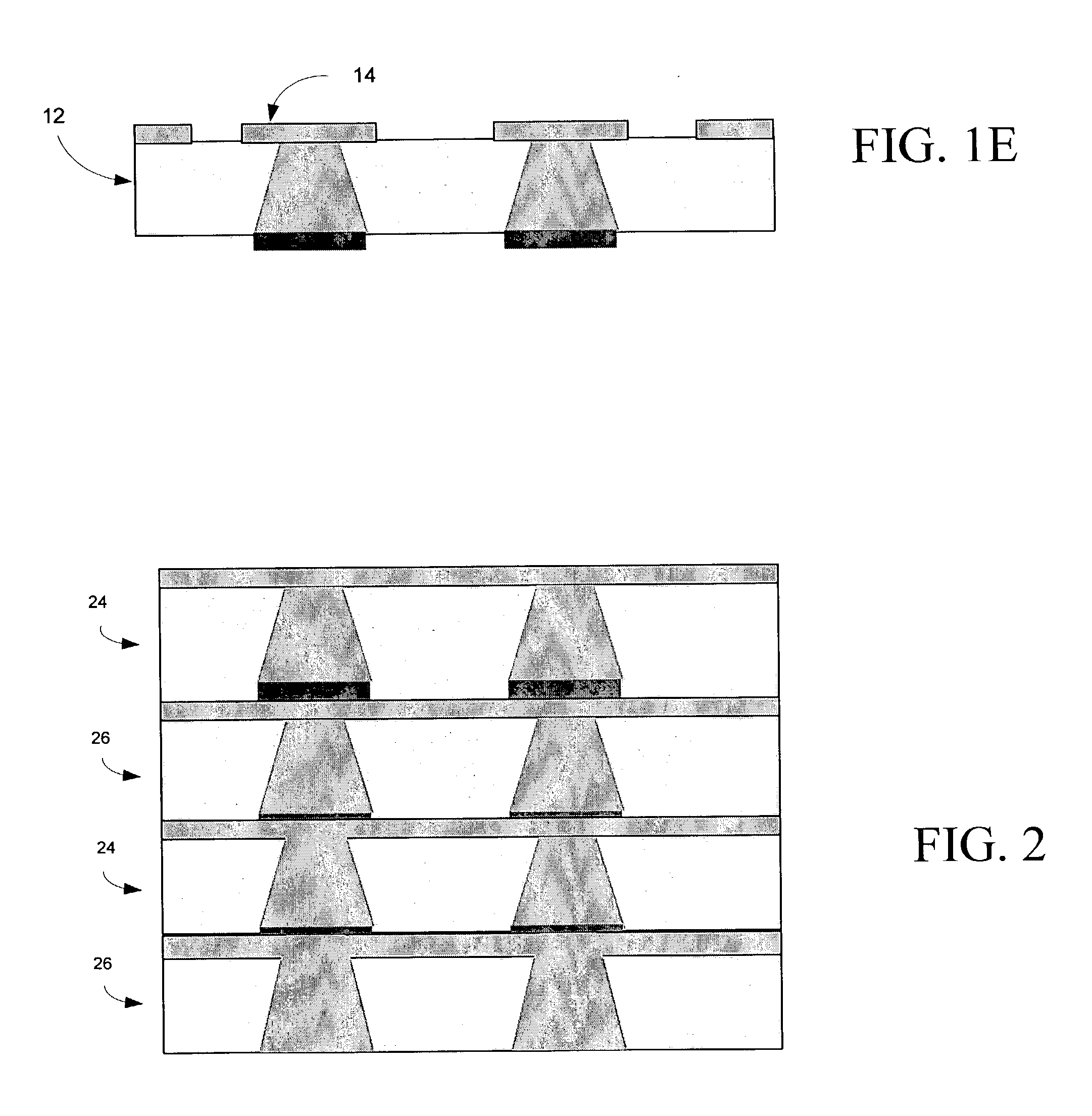Methods for fabricating three-dimensional all organic interconnect structures
a three-dimensional all organic, interconnected technology, applied in the direction of thermal polymer dielectrics, inductances, printed circuit assembling, etc., can solve the problems of high density requirements for multi-layer circuits, high frequency applications becoming ever more demanding, and the unresolved need for a low cost multi-layer process
- Summary
- Abstract
- Description
- Claims
- Application Information
AI Technical Summary
Problems solved by technology
Method used
Image
Examples
Embodiment Construction
[0030] The following is an illustrative embodiment of a method of fabricating a multilayer organic structure according to the present invention utilizing LCP as the organic material, followed by several alternative embodiments.
[0031] FIG. 1A is a schematic representation of an uncladded high temperature or low temperature LCP dielectric film 12, in accordance with an embodiment of the present invention. In a preferred embodiment, the high and low temperature LCP film has a CTE between 2 and 20 ppm / .degree. C.
[0032] Next, as illustrated in FIG. 1B, a metalized layer 14 has been fabricated on the high temperature or low temperature LCP dielectric film 12, in accordance with an embodiment of the present invention. Metallization of the LCP film 12 can be accomplished by electroless and electroplating, sputtering, evaporation, or chemical vapor deposition. Metallization can be an adhesive metal such as copper, chromium, titanium, or platinum, followed by deposition of either copper, nick...
PUM
| Property | Measurement | Unit |
|---|---|---|
| thickness | aaaaa | aaaaa |
| dielectric constants | aaaaa | aaaaa |
| volume fraction | aaaaa | aaaaa |
Abstract
Description
Claims
Application Information
 Login to View More
Login to View More - R&D
- Intellectual Property
- Life Sciences
- Materials
- Tech Scout
- Unparalleled Data Quality
- Higher Quality Content
- 60% Fewer Hallucinations
Browse by: Latest US Patents, China's latest patents, Technical Efficacy Thesaurus, Application Domain, Technology Topic, Popular Technical Reports.
© 2025 PatSnap. All rights reserved.Legal|Privacy policy|Modern Slavery Act Transparency Statement|Sitemap|About US| Contact US: help@patsnap.com



